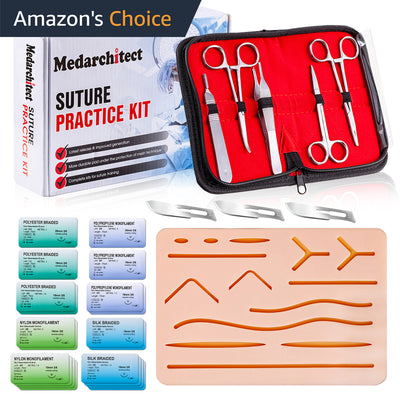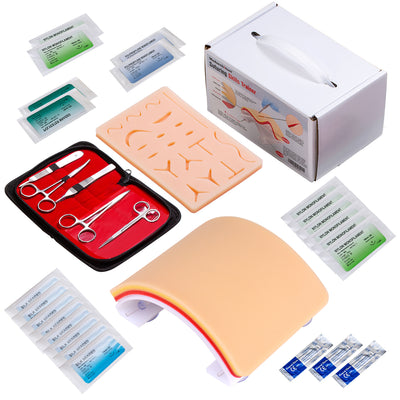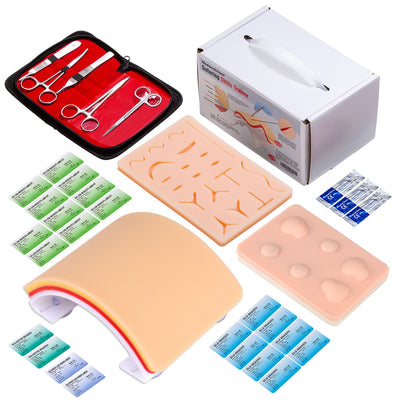In dental treatments, doctors often need to use sutures to close wounds, but with so many types of sutures dental available, it’s easy to wonder: which one is the best choice? Whether you’re a new dentist, a dental student, a nurse just getting familiar with sutures, or even a patient curious about the differences, understanding sutures can be confusing. Different dental procedures and wounds require different kinds of sutures, and choosing the right one helps wounds heal faster and more comfortably.
This article will help you make sense of the most common dental sutures types and give practical tips on how to pick the right one—so you can feel confident the next time you face a dental stitch.
What Are Dental Sutures?
Dental sutures are the threads dentists use to close up wounds inside your mouth after procedures like tooth extractions, gum surgeries, or implant placements. Think of them like tiny stitches that hold your tissues together so they can heal properly. Sutures help stop bleeding, protect the area from germs, and keep everything in place while your body does its healing work. Just like stitches on your skin after a cut, dental sutures play an important role in making sure your mouth recovers quickly and comfortably.
Classification of Dental Types of Sutures
There are several types of sutures dental practitioners commonly use, including absorbable and non-absorbable sutures, as well as monofilament and multifilament varieties. They are mainly classified in three ways:
- Absorbable vs. Non-Absorbable Sutures
1. Absorbable sutures are made to break down naturally in your body over time. That means they don’t need to be removed because your body will absorb them as the wound heals. These are often used when follow-up visits might be difficult or when the area heals quickly.
2. Non-absorbable sutures don’t dissolve and must be removed by the dentist after the wound has healed. They are usually stronger and used when longer support is needed.
- Natural vs. Synthetic Materials
1. Natural sutures come from materials like silk or animal intestines. They’re soft and easy to handle but may cause a bit more irritation in the tissue.
2. Synthetic sutures are made from man-made materials like nylon or polymers. They usually cause less reaction in your mouth and are often more durable.
- Monofilament vs. Multifilament Sutures
1. Monofilament sutures are made of a single smooth strand, which means they glide through tissue easily and are less likely to trap bacteria. However, they can be a little harder to tie securely.
2. Multifilament sutures are braided or twisted from many small strands. They’re softer and easier to knot but might have a higher risk of infection because of tiny spaces between the strands.
Understanding these categories can make a big difference in choosing the right suture for your dental procedure.
Pros & Cons of Each Type of Sutures Dental
Here’s a clear comparison table of common dental suture materials with key features including absorption time, strength, tissue reaction, and typical uses:
| Suture Material | Absorption Time | Strength | Tissue Reaction | Typical Uses |
| Chromic Gut | About 10–14 days | ★★★ | ★★★★ | Tooth extractions, fast-healing soft tissue wounds |
| Vicryl (Polyglactin 910) | About 28 days | ★★★★ | ★★ | Periodontal surgery, gum grafts, soft tissue closure |
| PDS (Polydioxanone) | About 90–180 days | ★★★★★ | ★★ | Long-term support in implants, bone grafts |
| Nylon | Non-absorbable (requires removal) | ★★★★★ | ★ | Implant surgery, wounds needing durable closure |
| Silk | Non-absorbable (requires removal) | ★★★ | ★★★★★ | Traditional dental surgeries, easy handling but higher tissue reaction |
| PTFE (Polytetrafluoroethylene) | Non-absorbable (requires removal) | ★★★★★ | ★ | Bone grafts, implants, cases requiring antimicrobial properties |
Tips for Choosing the Right Dental Suture
Choosing the right suture for a dental procedure might seem tricky, but keeping a few simple tips in mind can make it much easier:
- Match suture type to surgery
Use absorbable sutures (like Vicryl, Chromic Gut) for fast-healing wounds such as tooth extractions. For surgeries needing longer support (implants, bone grafts), choose strong non-absorbable sutures (PTFE, Nylon).
- Think about patient follow-up
If patients may miss suture removal visits, pick absorbable sutures to avoid complications.
- Consider tissue sensitivity
Synthetic sutures usually cause less irritation than natural ones, so choose them for sensitive patients.
- Choose sutures based on knot security and infection risk
Braided sutures tie easily but can trap bacteria. Monofilament sutures reduce infection risk but need careful knotting.
- Use stronger sutures for high-tension areas
Places that move or stretch need durable sutures; smaller wounds can use lighter ones.
- Follow guidelines and trust your experience
Always check product instructions and rely on what works best for you in practice.
At last
In dental practice, choosing the right suture helps patients heal faster and avoid complications. Different procedures need different sutures—some absorb, some need removal. Knowing which to use makes your work easier and recovery smoother. Keep these tips in mind for better results every time.
If you want to practice, a dental suture practice kit offers hands-on experience with common sutures, building your confidence before treating patients.










